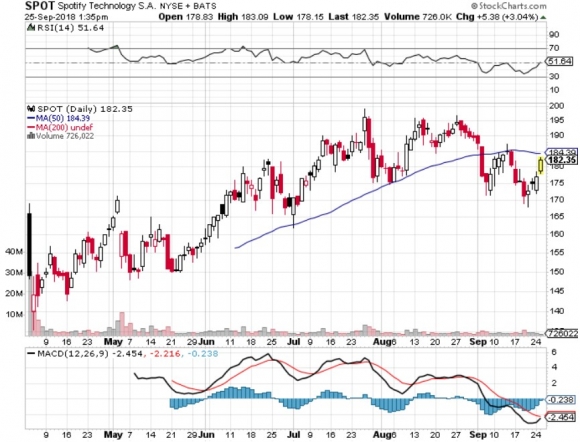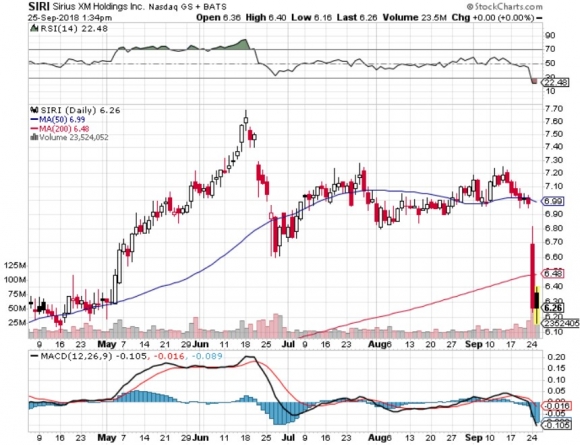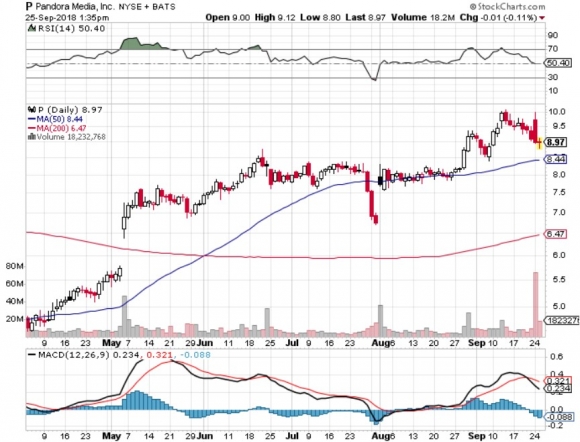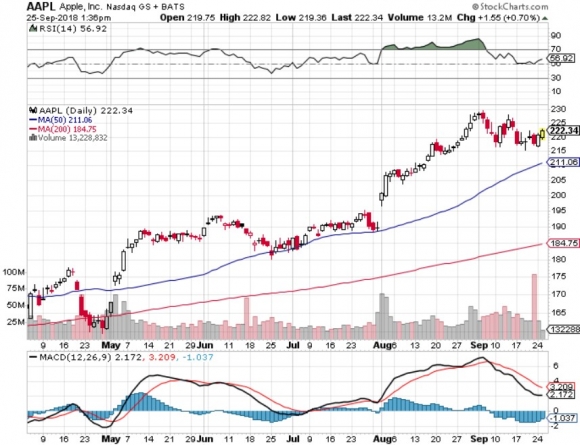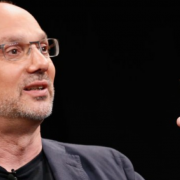In a flurry of deals, the music streaming industries consolidation is powering on as some of the industry’s biggest players have completed new acquisitions.
Is there a new King of the Castle?
Not yet.
In any case, the shakeout still allows Spotify to claim itself as the No. 1 company in the music streaming industry, but Apple (AAPL) and Sirius XM (SIRI) have gained.
There is still work to be done for the trailing duo but it is a step in the right direction.
Apple’s deal with Shazam, which just gained approval, was consummated last December, but was held up by European regulators over antitrust problems.
The Europeans have clamped down on American tech companies of late forcing them to play nicer after decades of running riot inside the region.
The Shazam app analyzes then pinpoints titles from music, movies, and television shows based on a brief sample through the device’s microphone.
If your neighbors are blasting the tunes upstairs at a Friday night shindig and you want to find out what song is causing you to lose sleep at night, just turn on your microphone and upload it into Shazam.
Shazam will tell you exactly the song’s title and the artist’s name.
Even dating back to 2013, this app was among the top 10 most popular apps in the world.
In 2018, Shazam has carved out a user base of more than 150 million monthly average users (MAU) and growing.
Shazam is used more than 20 million times per day.
An opportunity lies in urging Shazam users to then adopt Apple music.
Interestingly enough, to upgrade the quality of the app’s functionality, Apple is stripping away digital ads in Shazam.
Apple has made an unrelenting attempt to avoid introducing lower grade tech that could potentially taint its clean-cut brand.
Recently enough, film producers have complained that Apple is completely averse to any content with gratuitous violence, excessive drug use, and candid sex scenes.
Apple wants to cultivate and sell its pristine image.
Digital ads also fail to make the cut.
This spotless image boosts Apple’s pricing power along with the high quality of products that has seen Apple retain its place as the producer of the best smartphone in the world.
Other smart phone brands are still in catchup mode with a brand image significantly inferior to Apple’s.
And Apple CEO Tim Cook isn’t even interested in monetizing Apple music, and is more focused on “doing the right thing” for it.
Yes, the job of every company is to be in the black, but the No. 1 responsibility for a modern tech company is to grow and grow profusely.
Tech investors pay for growth, period.
As investors have seen with Netflix, companies can always raise prices after seizing market share because of the stranglehold on eyeballs inside a walled garden.
That potent formula has been the bread and butter of powerful tech companies of late.
Spotify is a captive of the music industry, of which it is entirely dependent for its source of goods, in this case songs.
At the same time, the music industry has fought tooth and nail to destroy the likes of Spotify, which benefits immensely from distributing the content it creates.
History is littered with failed music streaming services outgunned in the courtroom. Pandora (P) is the biggest public name out there whose share price has tanked over the long haul.
Pandora has created a proprietary algorithm offering song recommendations to listeners, but it is more or less an online music streaming app heavily reliant on a freemium pricing model with ads.
Sirius XM Holdings, a satellite radio company, signaled its intent in the music streaming business by taking a 19% in Pandora’s business last year.
It has followed that up now by completing a full takeover of the Oakland, California company for $3.5 billion.
This move adds 75 million users to its 36 million usership on Sirius and, in my view, the main objective is an eyeball grab to buy more listeners dragging them into its walled garden.
To triple a user base instantly to 75 million listeners is a boon for Sirius, which now has the firepower to legitimately compete with Spotify.
Pandora has been shopping itself around for the past two years, and companies such as Facebook were whispered to be eyeing this company.
Facebook chose to focus on developing dating and romance functions on its platform, and has mainly ignored the music streaming possibilities.
More critically, it allows Sirius to diversify out of the car space where satellite radio is predominantly used.
As much as Americans love to drive, the home is where they rest, and sleep, and Pandora will unlock a path into the home of listeners.
Synergies between home audio through Pandora, and car audio through Sirius should be evident over time.
The music streaming industry, such as the television streaming industry, has become fiercely competitive as of late. And this is a prudent move for Sirius to buy a new customer base at the same time as moving into the home.
The trend of tech companies penetrating the home and making it as smart as possible is revived constantly.
This piece of news isn’t as earth-shattering as Amazon’s (AMZN) smart home product launch event, but nonetheless indicates another leg up in competition for fresh user growth and its data.
This M&A surge is occurring amid a backdrop of the music industry’s obsession to exterminate Spotify and the other music streaming companies.
They are on a mission to force up the royalties these Internet giants must pay to pad their pockets and protect their interests.
Royalties are the music streaming companies’ main cost, and for Spotify, these royalty payments eat up 78% of total revenue.
But that does not mean Spotify is a bad company or even a bad stock.
Every company has its share of pitfalls. Throw in the mix that Amazon (AMZN) and Apple have music streaming services that do not even need to make a profit, and you will understand why some might be wary about putting new money to work in music streaming business stocks.
The primary reason that Spotify shares will outperform for the foreseeable future is because it is the preeminent music streaming platform.
Also, there is favorable latitude to make way toward the goal of monetization, and ample space to improve gross margins.
Global streaming revenue growth has gone ballistic as the migration to mobile devices and cord cutting has exacerbated the monetization prospects of the music industry.
Streaming revenue was a shade under $2 billion in 2013, and continued to post a growth trajectory of more than 40% each year since.
As it stands now, total global streaming revenue registered just a tick under $7 billion per year in 2017, and that was an improvement of 41.1% from 2016.
The choice among choices is Spotify in 2018.
The company was dogged by many years of famous artists removing their proprietary content from the platform citing unfavorable terms.
Eventually, almost all artists have relented and reinstalled their music on Spotify. They depend on alternative moneymaking avenues to compensate for lack of royalties, mainly live music.
Spotify has seized even more industry power with its new function of completely bypassing the music industry altogether, by offering a way for aspiring artists to directly upload music content onto its online platform.
Crushing the middleman has been a widespread theme in the tech industry for the past few decades, and the music industry is no different.
As technology has hyper-accelerated, the cost of producing music has plummeted giving access to just about anyone who has any talent.
No need to rent a sound studio for thousands of dollars per hour anymore in West Hollywood, and the music industry knows it.
It could be possible that the next cohort of viral artists will never cough over a dime to the music industry, and the bulk of the profits will be collected by a music streaming titan that distributes their content online.
How does Spotify make money?
It earns its crust of bread through paid subscriptions but lures in eyeballs using an ad-supported free version of its platform.
Naturally, the paid version is ad-less, and this subscription is around $5 to $15 per month.
In the second quarter, Spotify’s paid subscription volume surpassed 83 million, a sharp uptick of 40% YOY.
Ad-supported users came in at more than 101 million, even under the damage that General Data Protection Regulation (GDPR) did to western tech companies.
The ad-supported subscribers rose 23% YOY, and the paid version expects between 85 million to 88 million paid subscribers in the third quarter.
Many of the new paid subscribers are converts from its free model.
Spotify is poised to increase revenue between 20% to 30% for the rest of 2018.
The rise of Spotify's developing data division could extract an additional $580 million of revenue in 2023, making up 2% of total revenue.
When Spotify did go public, the robust price action was with conviction, making major investors - such as China’s Tencent, which possess a 9.1% stake and Tiger Global Management, which owns 7.2% - happy stakeholders.
In the last quarter’s earnings report, Spotify CFO Barry McCarthy reiterated the company’s goal to push gross margins from the mid-20% range to “gross margins in the 30% to 35% range.”
A jump in gross margins would go a long way in making Spotify appear more profitable, and that is the imminent goal right now.
Bask in the glow of the growth sweet spot Spotify finds itself in right now.
For the time being, the music division of Amazon and Apple are just a side note, even with Apple’s purchase of Shazam.
But Apple is vigorously improving its service products as its software and services segment moves from strength to strength, but that doesn’t particularly mean Apple Music.
Investors must sit on their hands to see how Sirius’s acquisition of Pandora plays out. These are by no means two extraordinary companies, and a major overhaul is required to make these two mediocre companies into one overperformer.
If you had to choose among Sirius, Pandora, or Spotify, then cautiously leg into a few shares of Spotify to test the waters.
